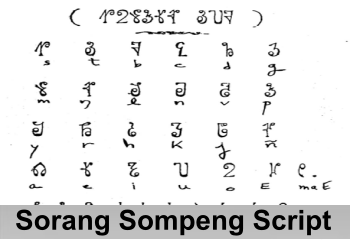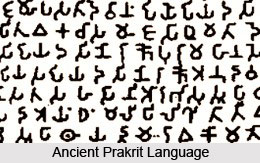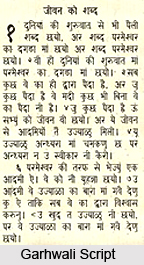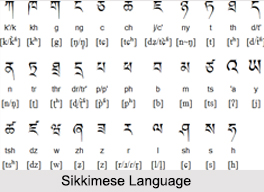 Sora language is one of the popular Indian tribal languages. It is a part of the Munda language group of India. Sora language is mainly spoken in eastern region of India that is in the state of Odisha mainly in its Ganjam district, Phulbani district and Koraput district. It is spoken by a huge range of its native people. Sora language is also known as Shabari, Sabar, Saora, Saonras, Savara, Sawaria, Saura, Swara and Sabara. Apart from Odisha, Sora language is also spoken by the members of tribal communities of the state of Andhra Pradesh mainly its Srikakulam district, Tamil Nadu, Madhya Pradesh, Bihar, West Bengal and also in some areas of the state of Assam. However, Savara language is the alternative name used for Sora language but it must be noted that it is not similar to the Dravidian Savara language, which is spoken in region, across the border between the states of Odisha and Andhra Pradesh.
Sora language is one of the popular Indian tribal languages. It is a part of the Munda language group of India. Sora language is mainly spoken in eastern region of India that is in the state of Odisha mainly in its Ganjam district, Phulbani district and Koraput district. It is spoken by a huge range of its native people. Sora language is also known as Shabari, Sabar, Saora, Saonras, Savara, Sawaria, Saura, Swara and Sabara. Apart from Odisha, Sora language is also spoken by the members of tribal communities of the state of Andhra Pradesh mainly its Srikakulam district, Tamil Nadu, Madhya Pradesh, Bihar, West Bengal and also in some areas of the state of Assam. However, Savara language is the alternative name used for Sora language but it must be noted that it is not similar to the Dravidian Savara language, which is spoken in region, across the border between the states of Odisha and Andhra Pradesh.
History of Sora Language
The history of the Sora language exhibits a fluctuating trajectory in its usage over time. A notable pattern emerges, characterized by periodic surges and declines in the number of speakers. Data indicates that the prevalence of Sora speakers experienced a gradual increase over several decades before encountering a significant downturn.
During the early 20th century, the population of Sora speakers demonstrated a steady rise, with figures climbing from 157 thousand in 1901 to 166 thousand in 1911. Subsequently, in 1921, this number experienced a marginal increase to 168 thousand, marking a continuation of the upward trend. The trend persisted into the following decades, evidenced by a notable surge in speaker numbers to 194 thousand in 1931.
However, a pivotal point in the language`s history occurred in 1951, characterized by an exponential growth in speaker numbers, reaching 256 thousand. This peak was followed by a brief plateau in 1961, where figures reached their apex at 265 thousand speakers.
Nevertheless, the momentum shifted drastically in 1971, as the number of Sora speakers experienced a sharp decline, plummeting back to 221 thousand. This downturn marked a significant departure from the previous growth patterns, signaling a complex interplay of socio-cultural factors impacting the language`s vitality and prevalence among its speakers.
Script of Sora Language
Sora language is written by using Telugu script and the Latin alphabets. It is also written by using the Sorang Sompeng script. Originating in 1936, Mangei Gomango is credited with its creation, tailored to the linguistic nuances and requirements of the Sora community. Further, Sora language was considered as one of the subjects of the American documentary film titled `The Linguists` of the year 2008. In this documentary film two linguists attempted to document various declining languages. Specifically, the Sora language is a member of the Southern Munda subgroup of the Munda branch of the Austro-Asiatic language family. The Sora people are an indigenous people of the country. The ancestors of the Sora people settled in India much before the coming of the Aryan and Dravidian people, who actually dominate them presently. Sora people along with the associated Munda group are racially as well as linguistically connected to several Mon-Khmer people consisting of the Cambodians.
Additionally, Sora finds expression through the Odia alphabet, particularly among bilingual speakers residing in Odisha. This script serves as a means for those proficient in both Odia and Sora to communicate effectively and preserve their linguistic heritage.
Similarly, speakers in Andhra Pradesh who are bilingual in Telugu and Sora utilize the Telugu script to transcribe the Sora language, facilitating communication and cultural exchange within their communities.
The Latin script also emerges as another prevalent method for transcribing the Sora language, particularly in contexts where interactions extend beyond the immediate linguistic community. Its widespread familiarity and adaptability make it a versatile tool for written communication in Sora across various platforms and contexts.
Uses of Sora Language
Sora language is a member of the family of Munda language and it is one of the two members of this group other being the Gorum or Parengi language. Sora language is however thriving in several areas. It is basically an oral language. Interestingly, it is not written or read extensively. The texts in Sora language exist in regionally dominant scripts of Oriya language and Telugu language. However, the language boasts a rich oral tradition, characterized by songs and folk tales passed down through generations via oral transmission.
The Sora language serves as the primary means of communication among the Sora people, who constitute a distinct Adivasi or tribal community residing in India. As an Adivasi language, Sora holds significance within the cultural and social fabric of its speakers. Geographically situated in proximity to Odia and Telugu-speaking communities, many Sora individuals are bilingual, proficient in both Sora and either Odia or Telugu. This linguistic duality facilitates interaction and cultural exchange between the Sora community and their neighboring linguistic groups.



















